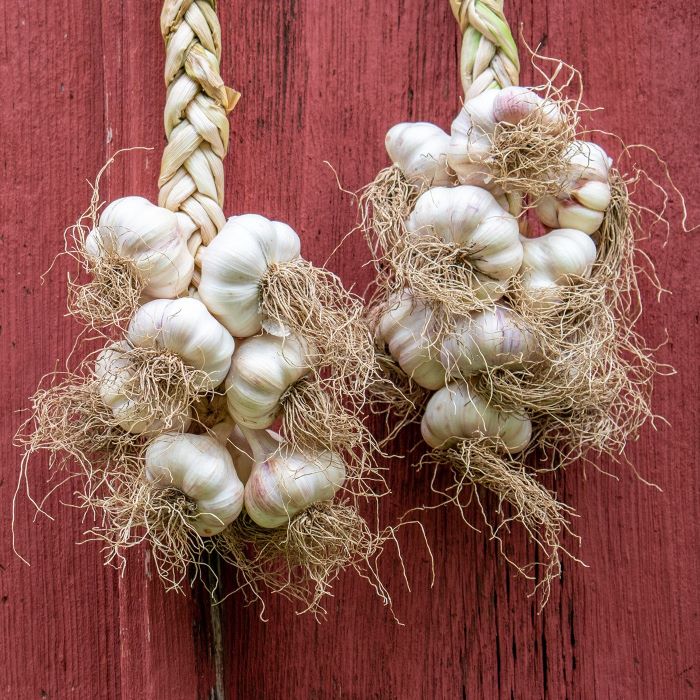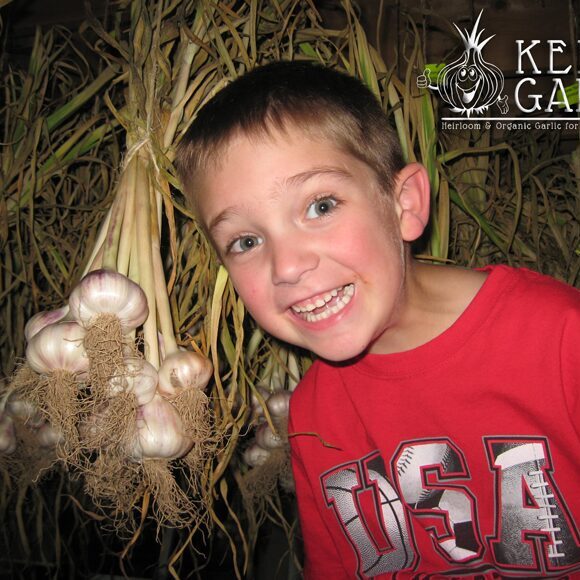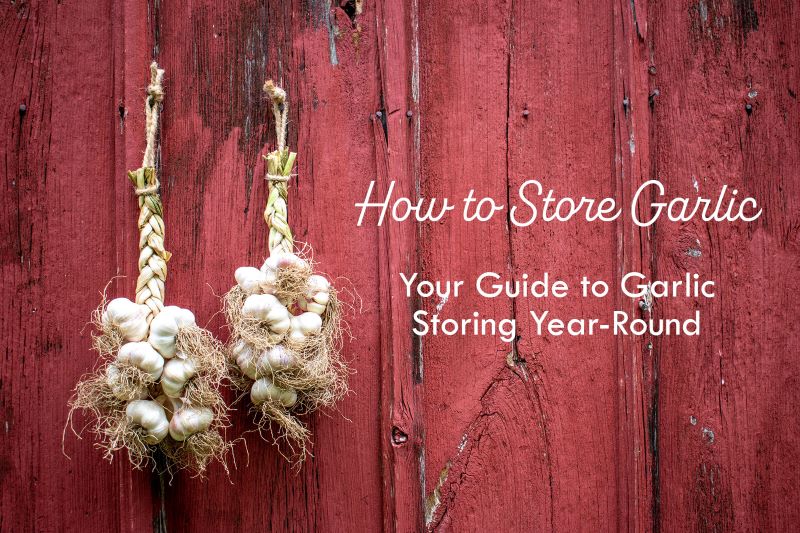
How to Store Garlic - Your Guide to the Garlic Storing Season
You’ve planted, grown, and harvested your garlic, and now it’s time to preserve the fruits–or bulbs–of your labor.
Or maybe you purchased garlic (lots of garlic) and want to make good on your investment. Either way, you have garlic, it’s storing season, and you want your garlic to last into next week, next month, and even next spring.
Does this sound like you? Here’s what you need to know about how to store garlic.
How to Store Garlic for Planting and Eating
✔️ Use breathable containers like baskets or crates with holes. Avoid plastic bags to prevent mold.
✔️ Ideal storage for July harvest:
Aug–Sept: 50–75°F, 40–60% humidity
Oct–Early Spring: 35–55°F, 40–60% humidity
💡 Pro Tip: Save some bulbs for winter/early spring. Store in a brown paper bag in your fridge’s crisper. Only take out what you need to avoid sprouting.
🧄 Storing garlic before planting:
Remove from packaging & store in a cool, dry spot with airflow.
Bulk garlic can stay in netted bags in a garage or barn.
🌱 General rule: Store garlic in a cool, dark, dry place—away from heat and sunlight.
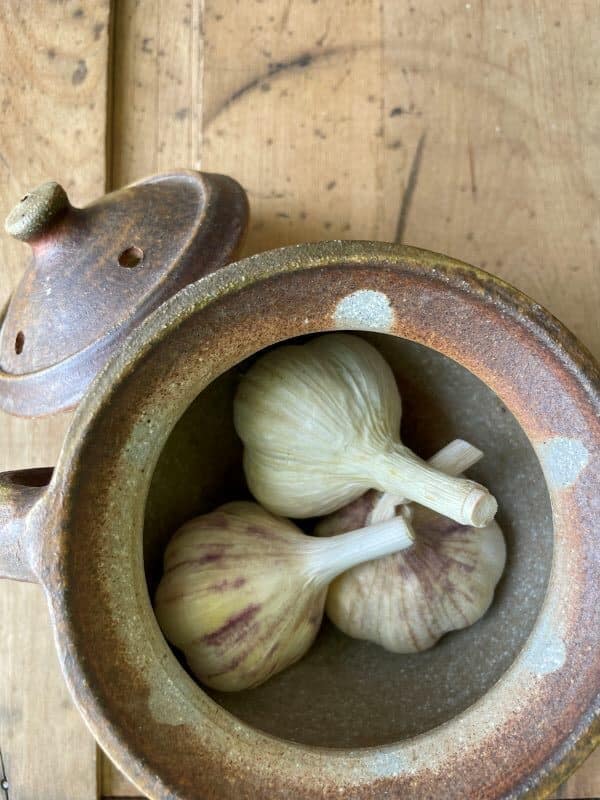
Ever wonder why some garlic lasts months while others dry up or sprout early?
✔️ Variety matters! For example, Rocambole varieties are short-storing and should be eaten first. Softneck varieties tend to store the longest.
✔️ Be Gentle! We always say to treat garlic bulbs like eggs. If they get bumped around during harvest and curing, it can affect the shelf life!
✔️ Don't Overdo the Curing Process! Once cured, do not store near a dehumidifier! Remove any fans once curing is complete.
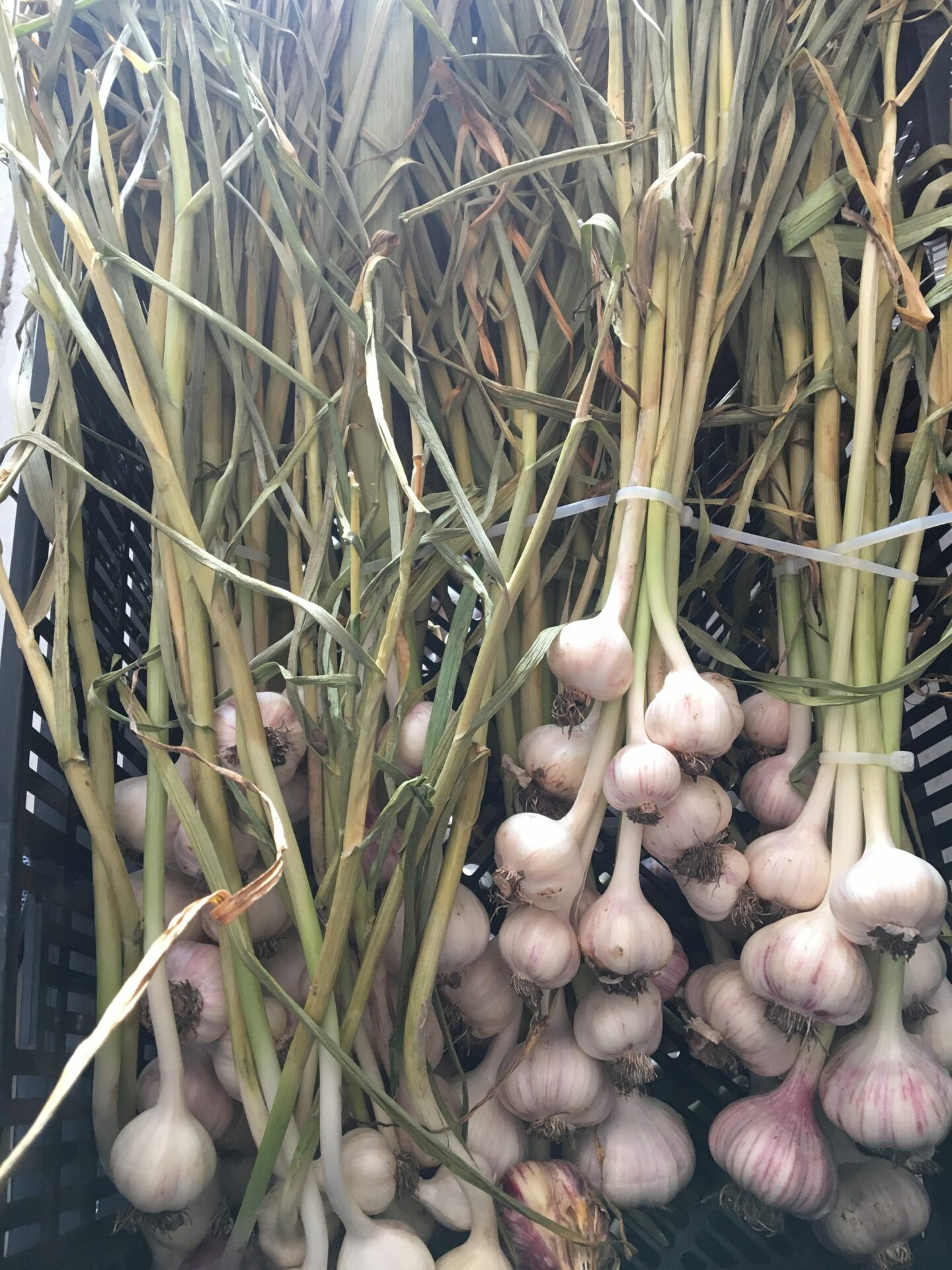
Can I Store My Garlic in the Refrigerator?
No basement or live in a warm climate? You can store garlic in the fridge.
✔️ For best results, place bulbs in a brown paper bag and keep them in the crisper drawer for a dark, cool, and stable environment.
✔️ Don’t refrigerate all at once. Keep some garlic on the counter or in a cellar and use that first. Turn to refrigerated bulbs later for longer-term use.
✔️ Planting garlic? Room temperature is fine for storage—no need to refrigerate unless you're in the South or want to trigger sprouting.
💡 To avoid early sprouting, only remove one bulb at a time from the fridge as needed.
Garlic Sprouting and Storage
Why Store-Bought Garlic Sprouts Quickly
- Garlic begins to sprout when it warms after being in cold storage—a process triggered by vernalization, the natural cold period garlic needs to start growing.
- Grocery store garlic is kept cold during shipping. Once it reaches warmer store shelves or your kitchen, sprouting begins, leading to a shorter shelf life.
🌱 When keeping your garlic in the fridge, only pull out what you need so it doesn't prematurely sprout!
How to Store Garlic for Planting in Warm Climates
If you live in a warm region like the South, refrigerate garlic prior to planting. Garlic needs at least 40 days at 40°F to mimic vernalization, a natural cold period that triggers sprouting.
When ready to plant, remove garlic from the fridge—the temperature shift tells the garlic it's time to grow.
To avoid early sprouting or spoilage:
Only take out garlic as needed.
Check bulbs for soft spots or mold during storage.
Note: Garlic won’t sprout immediately after warming, but it will over time. If you’re not planting it, use it before it grows.
💡 Have sprouted garlic? Don’t toss it! Garlic sprouts are safe to eat and can contain 13% more nutrients than the cloves. Simply remove the sprout and enjoy it raw for a health boost.
How to Prepare for Garlic Storage During the Growing and Harvest Seasons
Successful garlic storage starts before the bulbs are stored. Factors like how garlic is grown, harvested, cured, and even the variety can impact how long it lasts.
Once in storage, key elements like rainfall before harvest, temperature, humidity, how many leaves remain on the bulb, cleaning practices, and exposure to diseases or microorganisms all affect garlic’s shelf life.
Some of the longest-storing garlic comes from bulbs with 6–8 inch stems, harvested in bunches of 6–8, then hung or placed loosely in baskets.
Hardneck and softneck garlic store similarly. The main difference?
Hardneck garlic can be stored in cured bundles.
Softneck garlic can be braided and hung.
Proper curing—drying the garlic so the leaves form a protective layer—is essential for long-term storage.
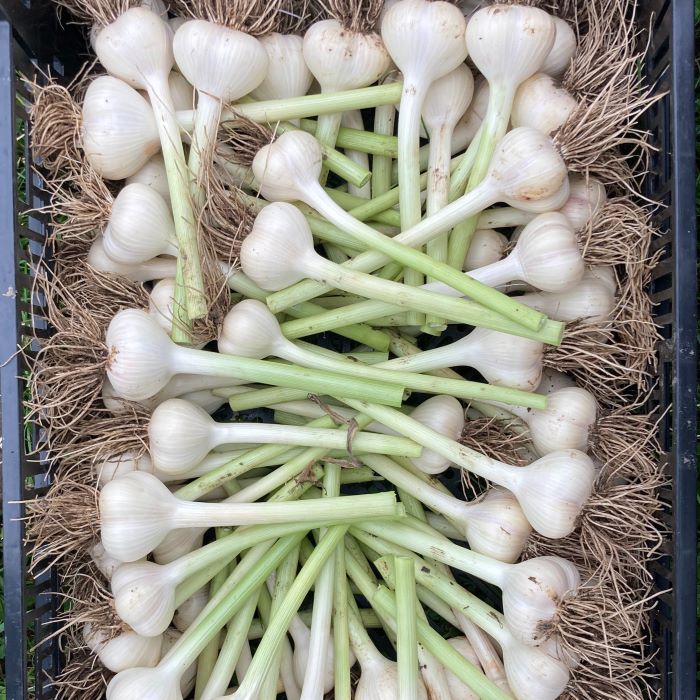
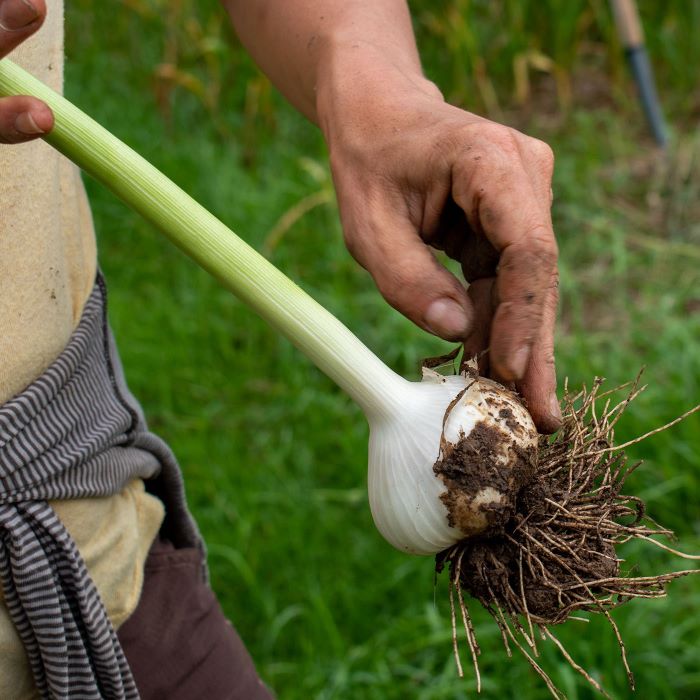
How to Handle Garlic During the Harvest for Long-Term Storage
Handle garlic gently during harvest—like apples, bulbs can bruise easily, shortening storage life.
Harvest when 4–5 green leaves remain. This leaves 3 tight leaf wrappers, ideal for long storage.
Remove outer leaves and brush off dirt from the bulb and roots. This helps prevent microorganisms that can shorten shelf life.
